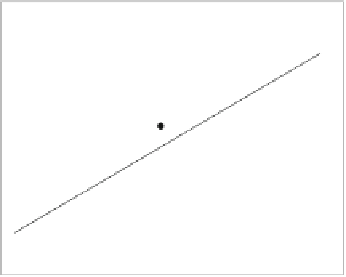Geoscience Reference
In-Depth Information
represents the dimensional facility) and a point v. It is given by using the standard
definition
d.X;v/
D
min
x2X
d.x;v/:
(7.2)
Note that in some applications d.X;v/ is defined as max
x2X
d.x;v/, and that the
average distance to all points in the set also is a reasonable definition; however, (
7.2
)
is the most common model in this context.
We now specify the distances d we are mostly working with in this chapter.
The most common distances in location theory are derived from norms, i.e., d
W
R
D
D
!
is given as d.x;y/
WD k
x
y
k
for some norm
kk
. Moreover,
distances derived from a gauge
W
R
R
D
!
given throughd.x;y/
D
.y
x/ have
also been used in the location of dimensional facilities. Note that gauge-distances
are no metrics since they are in general not symmetric, and that norms are special
gauges. We also use the
vertical distance
and its generalizations, being neither a
norm nor a gauge but giving insight into the problem, in particular for the location of
lines and hyperplanes. For two points x
D
.x
1
;:::;x
D
/;y
D
.y
1
;:::;y
D
/
2
R
R
D
R
the vertical distance is given as
d
ver
.x;y/
D
j
x
D
y
D
j
if x
i
D
y
i
;i
D
1;:::;D
1
1
otherwise.
(7.3)
This distance leads to trivial location problems if X is required to be a point but
yields interesting problems with applications mainly in statistics when locating lines
or hyperplanes.
Figure
7.1
presents two examples on how distances are computed, and optimal
dimensional structures may look like. In both examples we have given six existing
points, all of them with unit weights. The left part of Fig.
7.1
shows a line
minimizing the maximum vertical distance to the set of existing facilities. In the
Fig. 7.1
Two illustrations for locating dimensional facilities.
Left
:A
line
minimizing the maxi-
mum vertical distance.
Right
:A
circle
minimizing the sum of Euclidean distances























